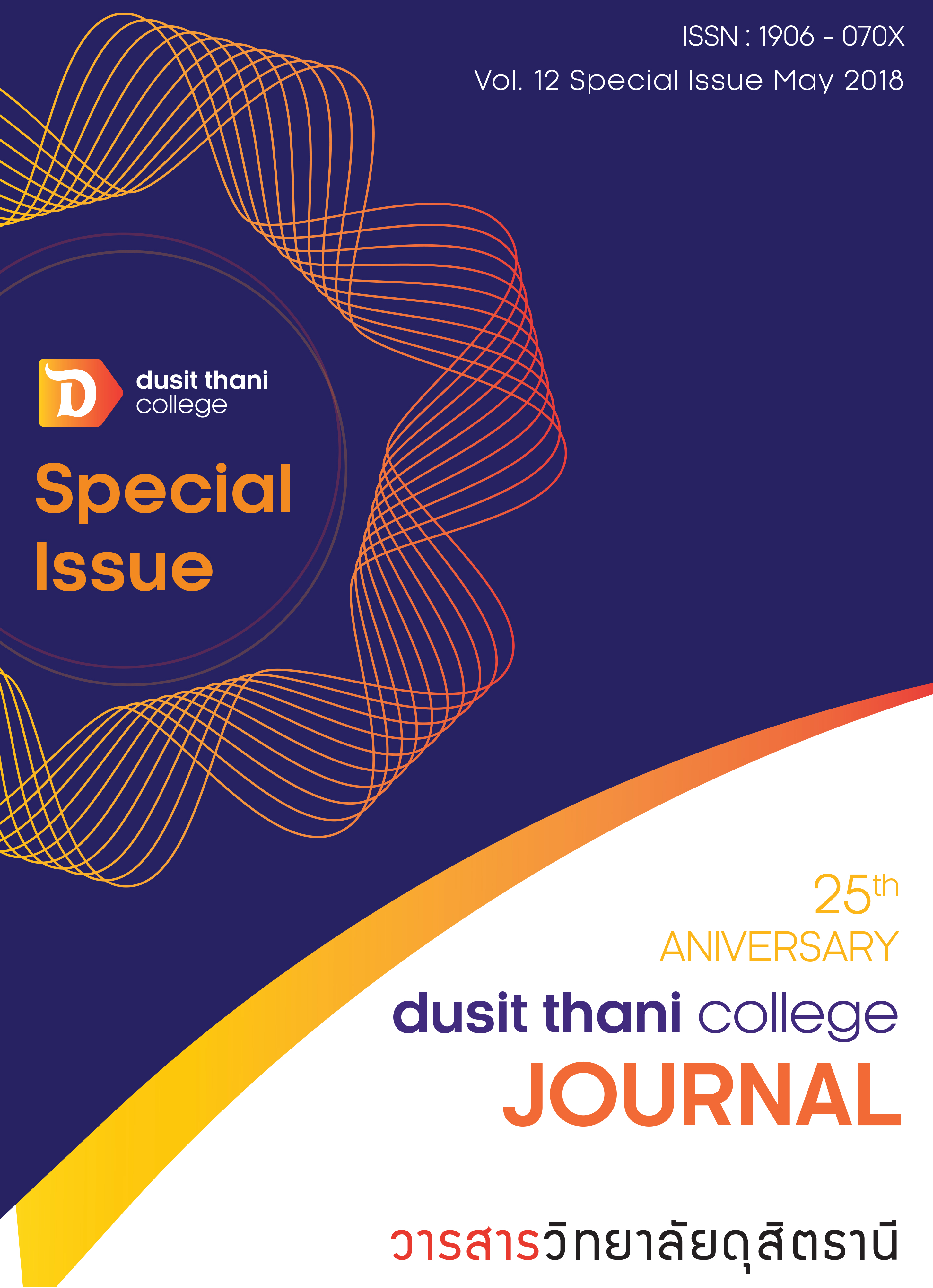Turning Tsunami Disaster Affected Site into Community Based Tourism Focusing on Dark Tourism: The Case of Bann Nok Lay, Phuket Community Participation Model
Main Article Content
Abstract
As much as it is important to sympathize with victims of natural disasters such as Tsunamis, there are other ways in which the events could be packaged and presented to yield economic outcomes such as dark tourism that would benefit the affected communities, victims and society as a whole. Thus, this study focused on understanding Bann Nok Lay in terms of dark tourism. The research objectives therefore are 1) to investigate if there was a potential for dark tourism at Bann Nok Lay, 2) to understand the behavior and expectation of tourists towards dark tourism in relation to Tsunami disaster; and 3) to propose community participation model. These objectives were achieved by the use of both qualitative and quantitative research methods, employing questionnaire and semi-structured interview checklist, where 5 experts, 400 international tourists and 400 community members were involved in the survey. The research outputs are 1) the potential expressed by the community does not justify that they are prepared for dark tourism. It emerged that the community members have a strong urge to take advantage of the economic viabilities that come with dark tourism, 2) the expectations of the tourists are different from the community member’s potential. What this implies is that the potential expressed by members of the community does not justify that they are prepared for dark tourism when their potential is related to the expectations of the tourists; and 3) a systematic participation model was suggested. Thus, there is as well the need to improve tourism publicity since it was noted that in Thailand, especially dark tourism in Ban Nok Lay has not grown strong enough to attract large groups of people and multiple visits.
Article Details
Article Screening Policy
- All research and academic articles to be published must be considered and screened by three peer reviews in the relevant field / article.
- All articles, texts, illustrations and tables published in the journal are the personal opinions of the authors. Editors don't always have to agree. And no responsibility whatsoever is the sole responsibility of the author.
- The articles to be published must never be published. Where did you first publish? And not in the consideration of other journals If the audit found that there has been a duplicate publication It is the sole responsibility of the author.
- Any article that the reader sees as being plagiarized or impersonated without reference. Or mislead the work of the author Please let the journal editor know it will be your greatest blessing.
References
Buckle, P. (2006) Assessing Social Resilience In D. Paton & D. Johnston, (Eds) (2006) Disaster Resilience, An Integrated Approach. Illinois: Charles C Thomas Publisher Ltd.
Forgione, D. A., & Smith, P. C. (2007). Medical tourism and its impact on the US health care system. Journal of Health Care Finance, 34(1), 27 - 35.
Glaesser, D. (2003) Crisis Management in the Tourism Industry, Butterworth- Heinemann: Oxford.
Henderson, J.C. (2005) “Responding to Natural Disaster: Managing a Hotel in the Aftermath of the Indian Ocean Tsunami.” Tourism and Hospitality Research, 6 (1): 89–96.
Henderson, J.C. (2007) Corporate social responsibility and tourism: hotel companies in Phuket, Thailand, after the Indian Ocean Tsunami. International Journal of Hospitality Management 26: 228–239.
Hong, K., & Yamkasikorn, M. (2015). Obstacles to effective implementation of strategic management system plan in Cambodian dual-system school. Journal of Education, The Faculty of Education Burapha University, 26(1), 47-64.
Lee, Y. L., Affendi, Y. A., Tajuddin, B. H., Yusuf, Y. B., Kee Alfian, A. A., and Anuar, E. A. (2005). A Post-Tsunami Assessment of Coastal Living Resources of Langkawi Archipelago, Peninsular Malaysia. NAGA, World Fish Center Newsletter 28(1): 17-22.
Poria, Yaniv, Arie Reichel, and Avital Bira. (2006). “Heritage Site Perceptions and Motivations to Visit.” Journal of Travel Research, 44(3): 318–26.
Rigg, J., Law, L., Tan-Mullins, M., and Grundy-Warr, C. (2005) The Indian Ocean Tsunami: socio-economic impacts in Thailand. The Geographical Journal, 171, 369-386.
Rittichainuwat, Ngamsom Bongkosh. (2006). “Tsunami Recovery: A Case Study of Thailand’s Tourism.” Cornell Hotel & Restaurant Quarterly, 47(4) 390–404.
Sharpley R. (2005) Travels to the edge of darkness: towards a typology of dark tourism. In: C. Ryan, S. Page and M. Aicken (eds) Taking Tourism to the Limit, London: Elsevier.
Sharpley R. (2009), “Shedding light on dark tourism: An introduction” In R. Sharpley and
P. Stone (eds.) The darker side of travel: The theory and practice of dark tourism 3-22, Bristol: Channel View Publications.
Sheehan, L & Ritchie, B.J.R. (2005) Destination Stakeholders. Exploring Identity and Salience. Annals of Tourism Research. 32(3) 711-734.
Stone P. R. and Sharpley R (2008) Consuming Dark Tourism: A Thanatological Perspective. Annals of Tourism Research, 35(2) 574-595.
Stone, P.R. (2009) Dark Tourism: Morality and New Moral Spaces. In R. Sharpley and P.R.Stone (eds) The Darker Side of Travel: The Theory and Practice of Dark Tourism, 56-72, Aspect of Tourism Series, Bristol: Channel View Publications.
Tarlow P. E. (2005) Dark Tourism: The appealing ‘dark side’ of tourism and more. In: Novelli M. (ed) Niche Tourism – Contemporary Issues, 47-58 Trends and Cases. Oxford: Butterworth-Heinemann.


